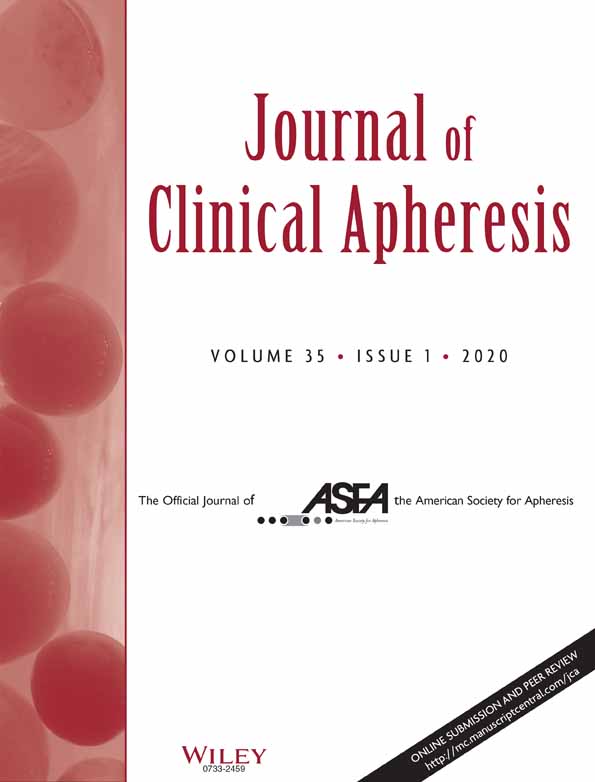Heparin-induced thrombocytopenia associated with collection of hematopoietic progenitor cells by apheresis
Present address: Jay S. Raval, Department of Pathology, University of New Mexico, Albuquerque, NM.
Marshall A. Mazepa, Department of Medicine, University of Minnesota, Minneapolis, MN.
Marian A. Rollins-Raval, Department of Pathology, University of New Mexico, Albuquerque, NM.
Abstract
Heparin-induced thrombocytopenia (HIT) can occur following exposure to heparin and is characterized by thrombocytopenia with increased risk for thrombosis. This condition is mediated by formation of immunoglobulin G antibodies against platelet factor 4/heparin complexes that can subsequently lead to platelet activation. Herein, we detail the clinical and laboratory findings, treatments, and outcomes of two patients who developed HIT and thrombosis after undergoing collection of hematopoietic progenitor cells by apheresis (HPC-A) for autologous HPC transplant. Given that heparin may be used during HPC-A collections, these cases emphasize the importance of prompt consideration of HIT in patients that develop thrombocytopenia and thrombosis following HPC-A collection with heparin anticoagulation.
CONFLICT OF INTEREST
The authors have no relevant conflicts of interest.




